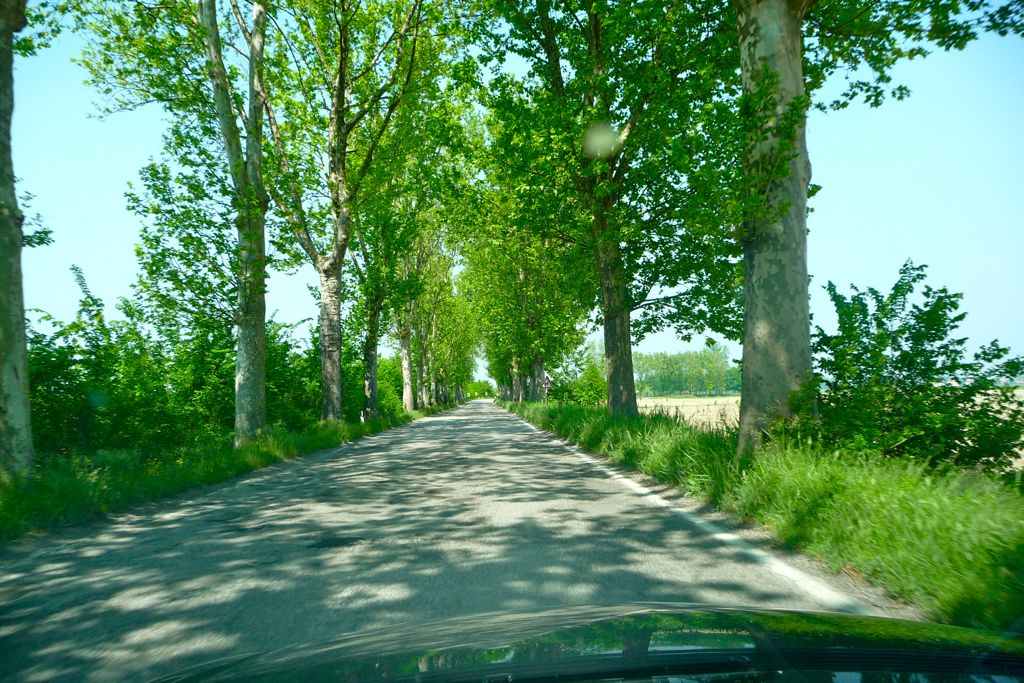
After a night in the Renazzo area, it was time to drive on to northeast Italy where the rest of Beth's family once lived. We drove May 7th on the A13 and the A4, two toll roads, to get to Grado, a town on an island at the very northern tip of the Adriatic sea. Many of the roads in this NE part of Italy looked like this.

Here are the cities we were to be driving between for the next few days. We never drove to Trieste, but we went to Udine, Palmanova many times, and each night we returned to Grado.
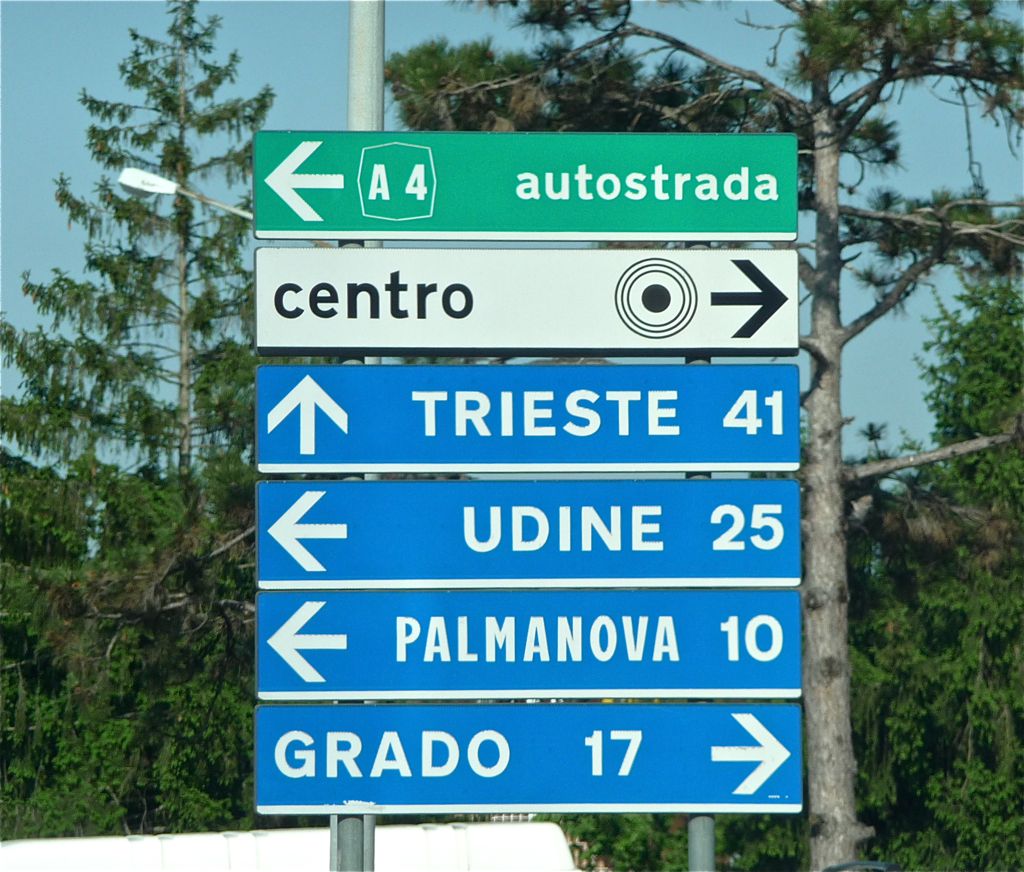
Here was the view from our hotel window at the Hotel Metropole at Piazza San Marco 15. It was fun to sit on our balcony and just watch the boats come and go.
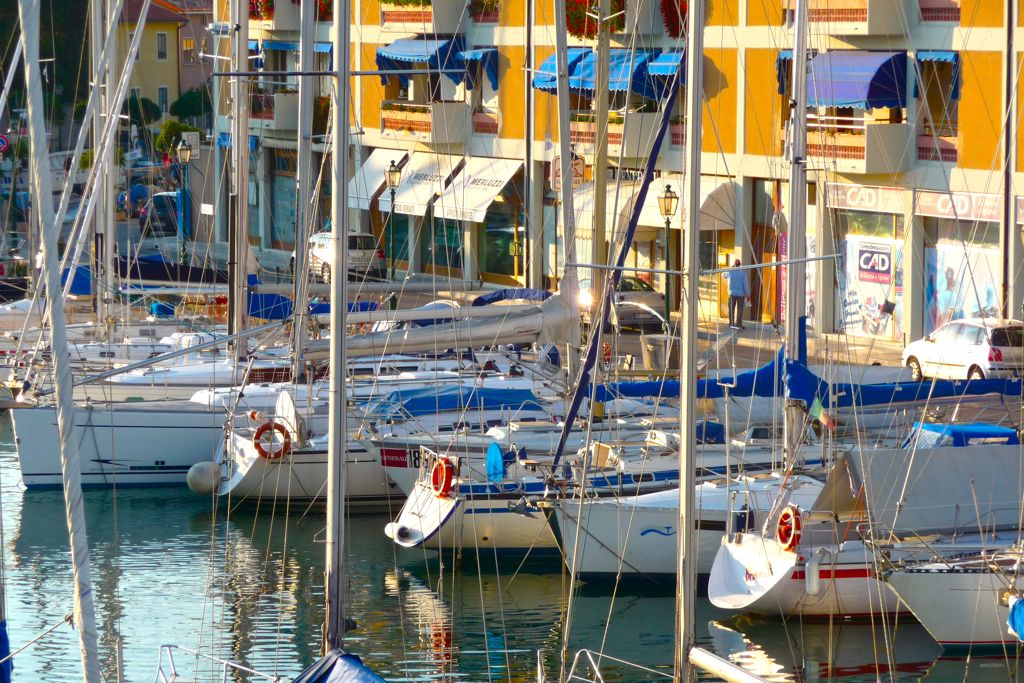
Beth ended up buying this purse for ten Euros the next day.

We watched the sun set along the Adriatic Sea.
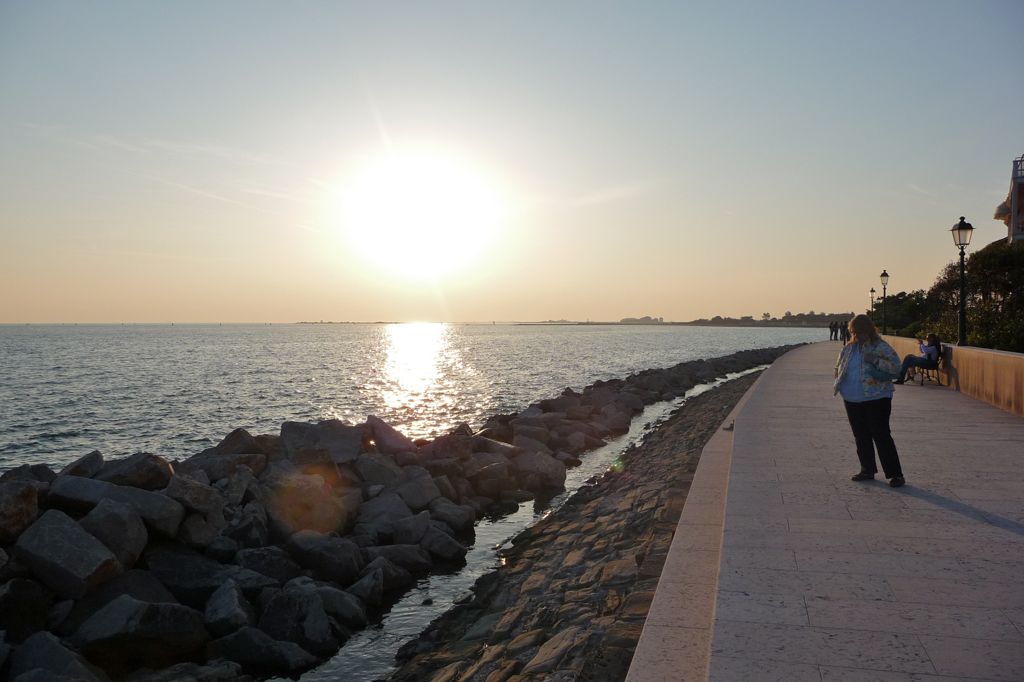
We wandered the moonlit streets. It was romantic.
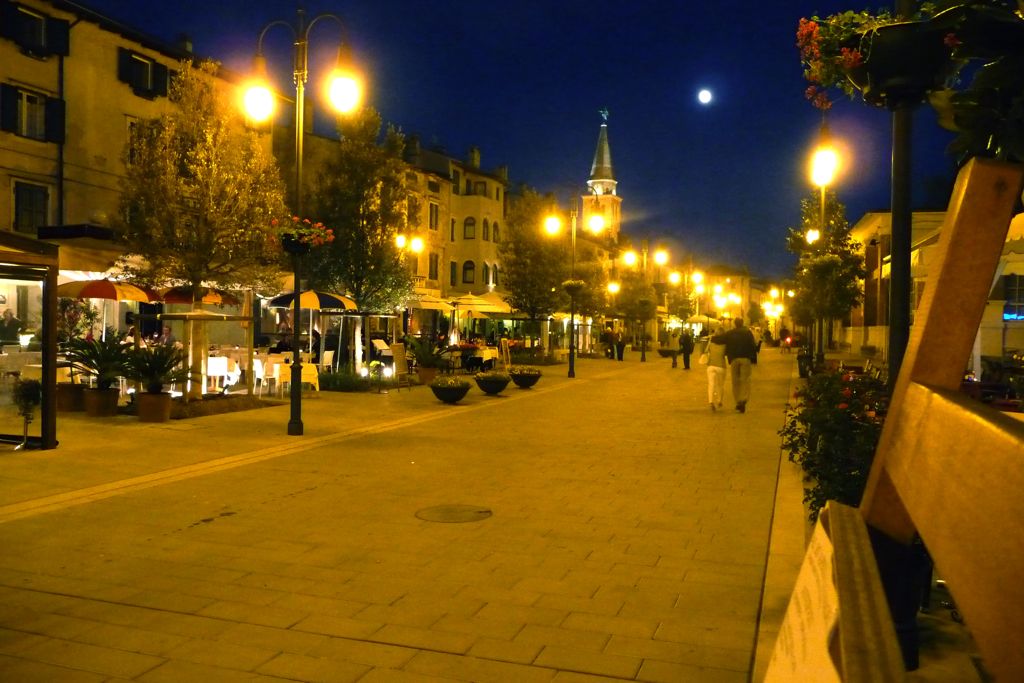
On the morning of May 8th we began to seriously look for family history related things. We drove to Udine and visited a government office but they did not have the right info for us. Udine looked to me like a blend between Buenos Aires and Lima Peru with a bit of eastern Europe. Udine is a fairly big city of about 100,000 people.
So next up was to drive back to Santo Stefano Udinese. We passed a house on the way to Udine that had caught my attention and we came back to it and parked. Why?
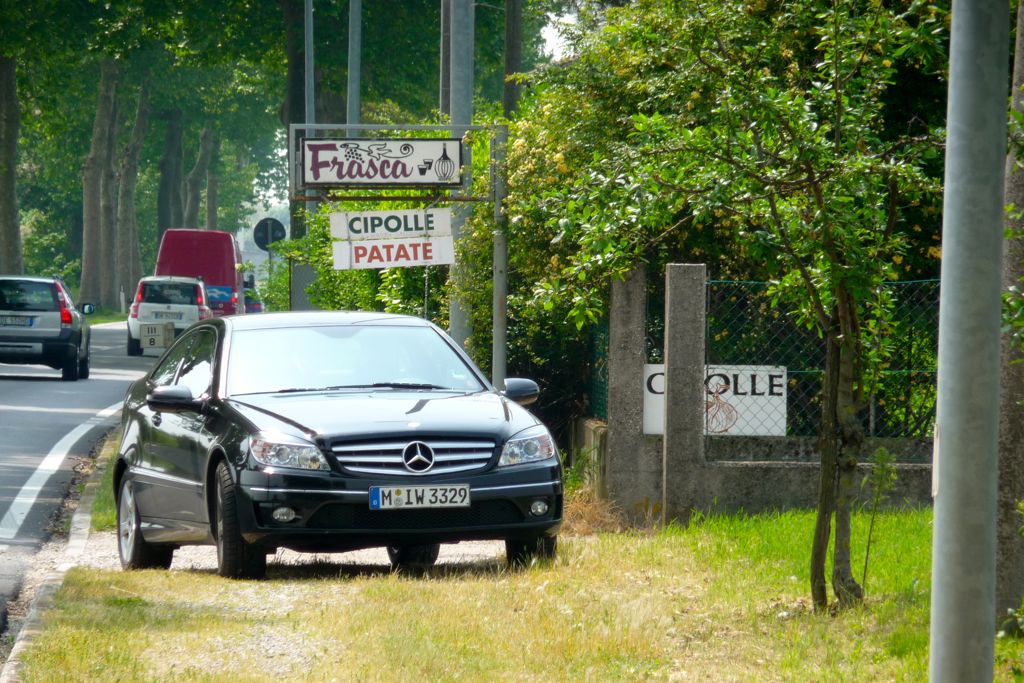
This photo is why. This photo was our clue to where Beth's family – the Giabbais – had lived. We were looking for this house.
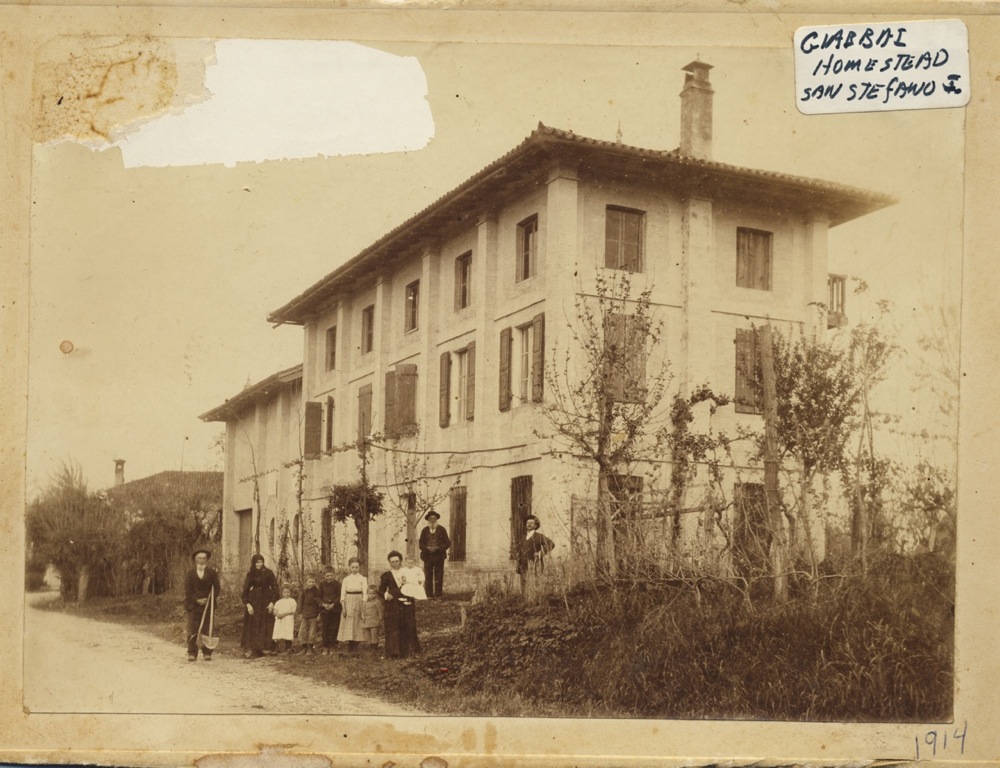
The house that I had seen which we returned to was this house with the "Frasca" sign out front:
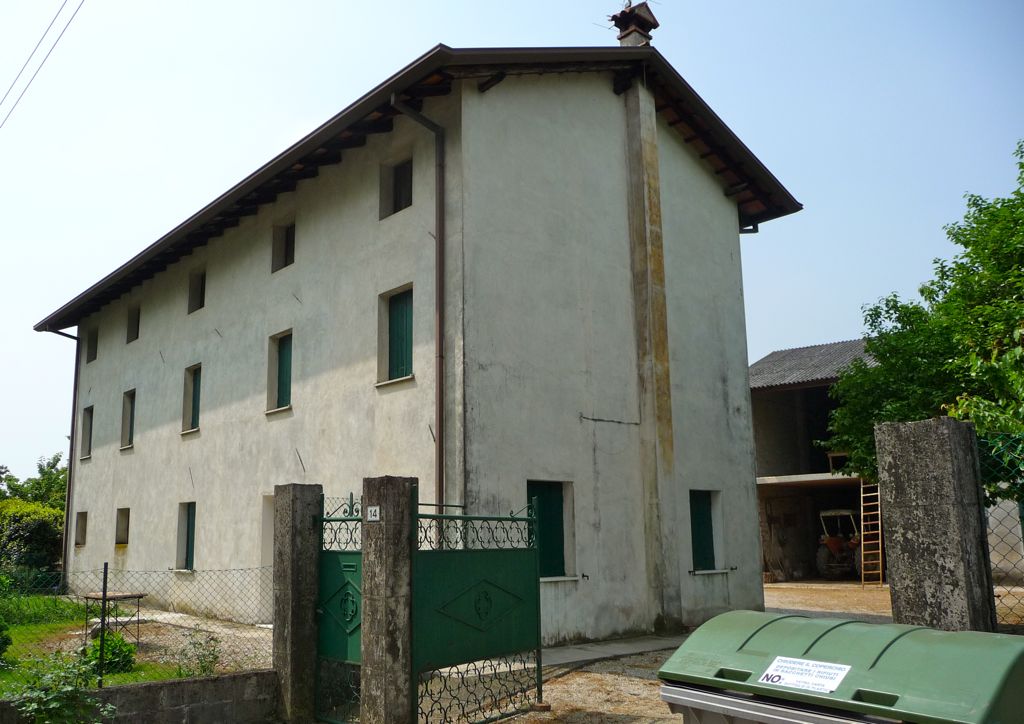
As you can see, it is similar but is not the house. There were no buildings behind it, and the roof was different. But the concrete beams on the front of the house were similar. We were getting warm.
Beth got out of the car and went behind the house and went down some stairs and went into a room filled with older men. She showed them a copy of the photo and asked if they knew where this old house was. They did not know, but they all wanted to see the photo. One man, named Paulo, brought her back outside and began walking down the street with her. They went to a neighbor's house but the neighbor was not home. They walked back and then told us to follow him in his car to the next larger town of 2412 people, Santa Maria la Longa.
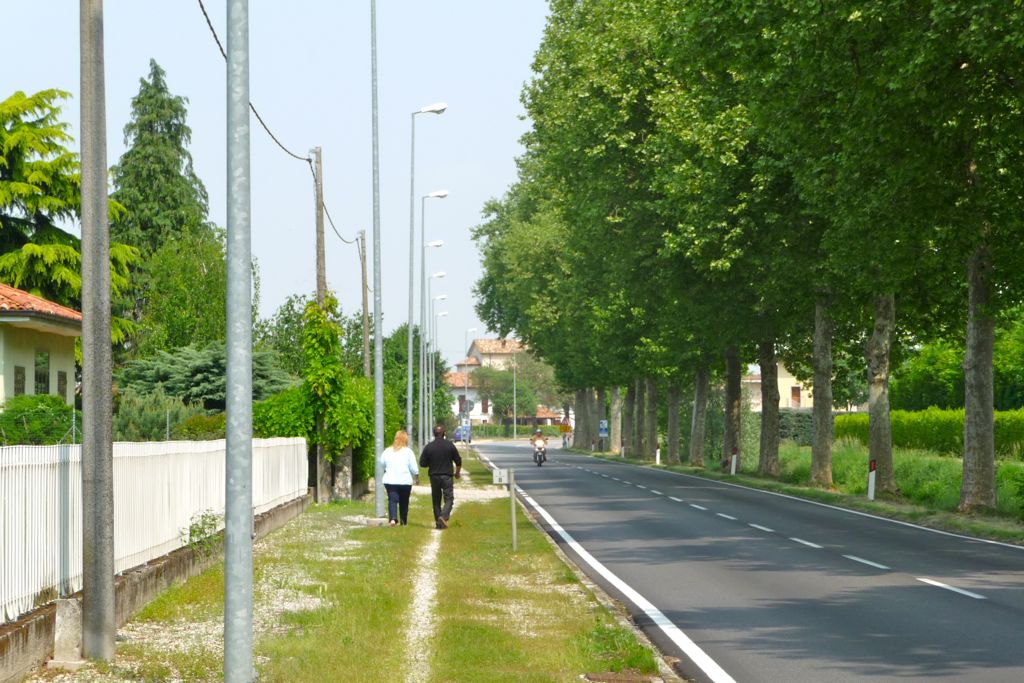
Paulo took to to the main city office in Santa Maria la Longa. Here he is with Beth and a very helpful woman at the office. He explained our situation the best he could and they decided to call in the city architect.
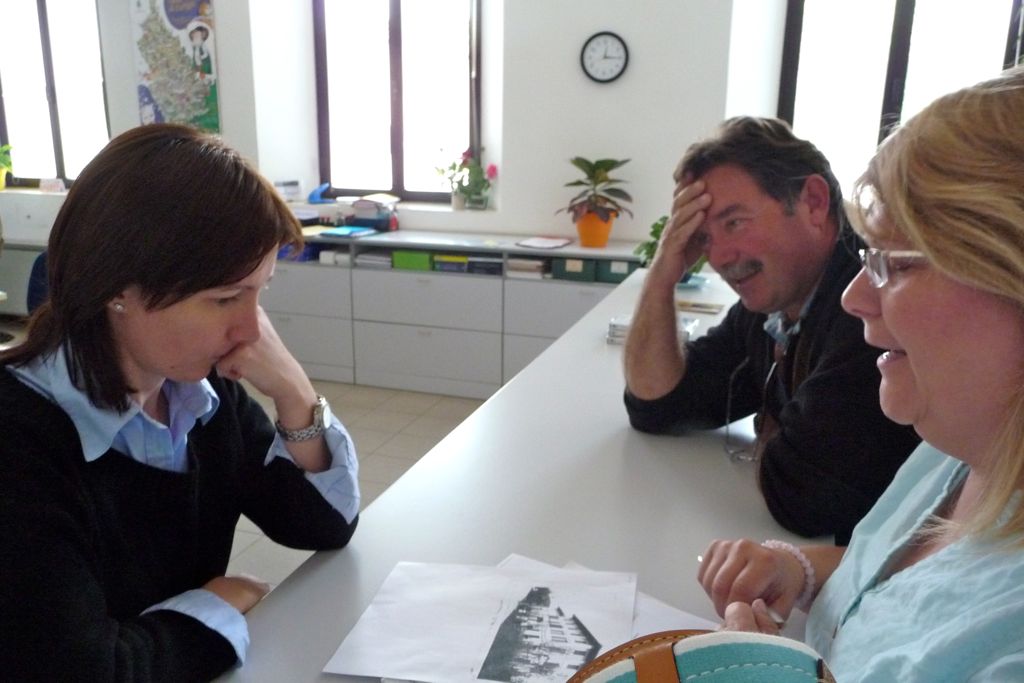
Here is Paulo between two city employees, with the architect being on the right. He quickly figured out that it was probably the Mestroni household, back in Santo Stefano Udinese. I asked one of them if he had met any Americans who had been looking for geneological information before us. He pointed to Beth and I and said, "You are the first and the second."
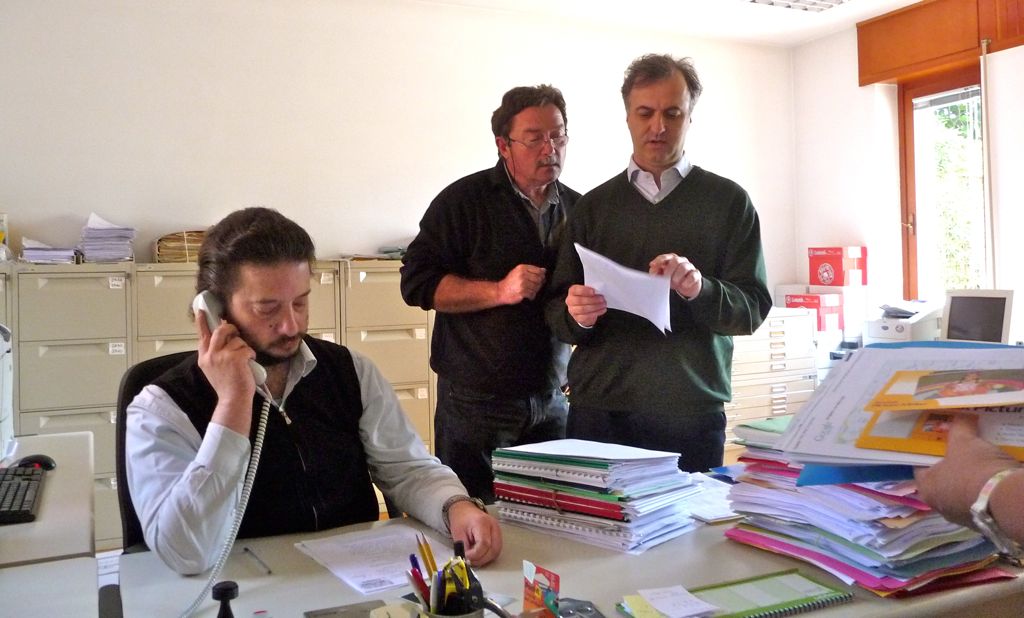
The helpful woman very quickly had Luigi Giabbai's immigration information card pulled from the files! I photographed it on the spot.
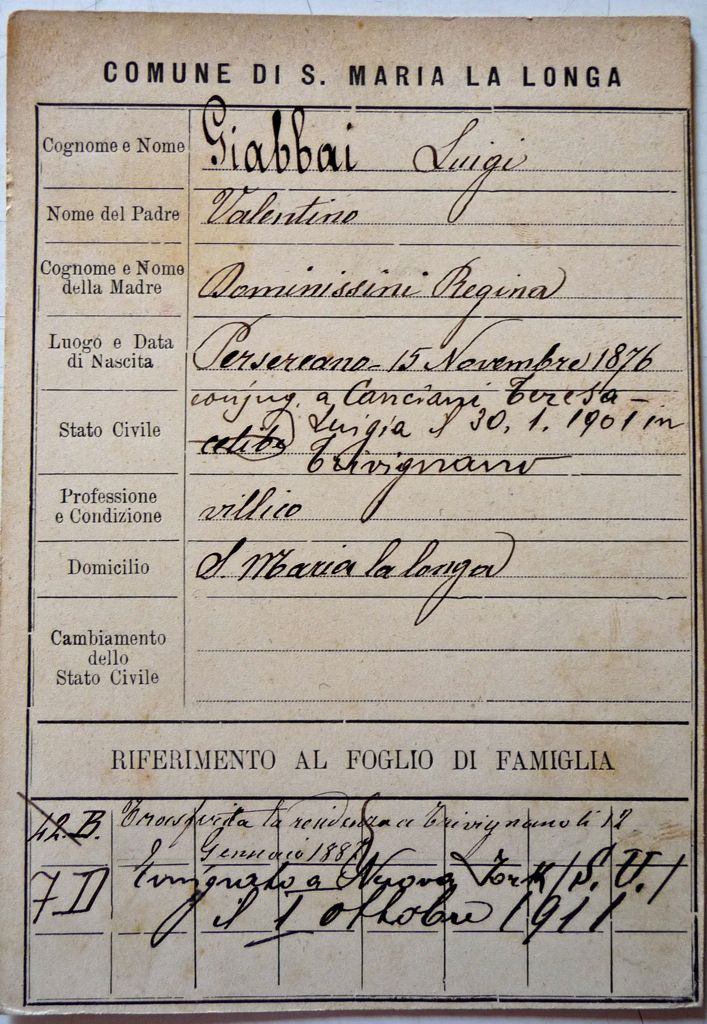
Next we jumped into several vehicles and drove back to the Mestroni household. Paulo and company had found the old Giabbai house for us! The cement columns that used to stick out (see the old photo above) had been filled in so it looked a bit different.
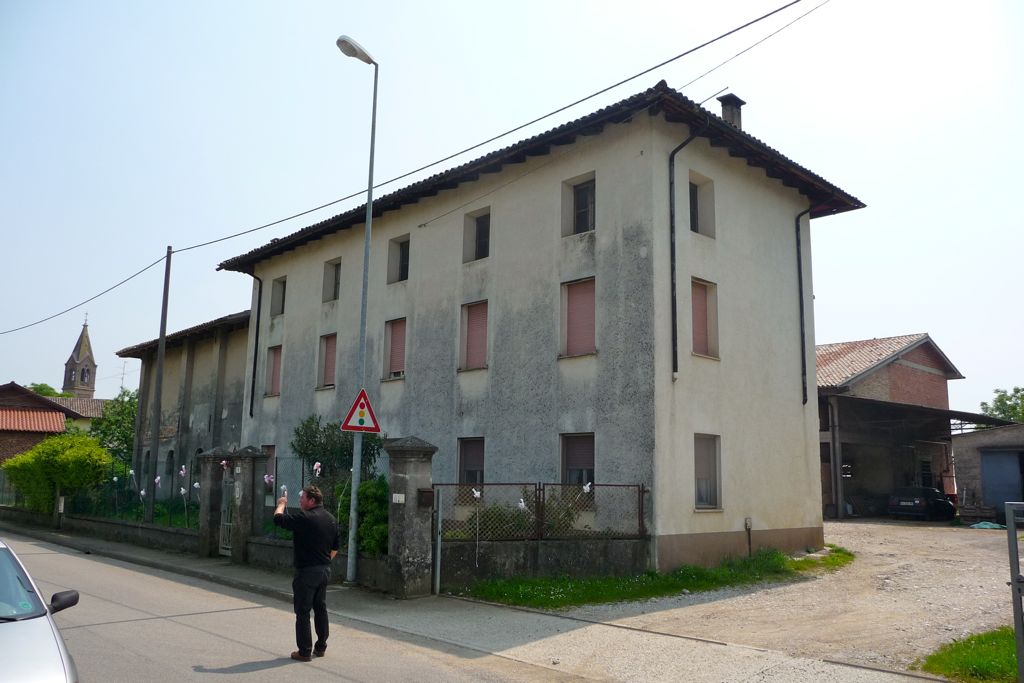
They added a barn behind the house.
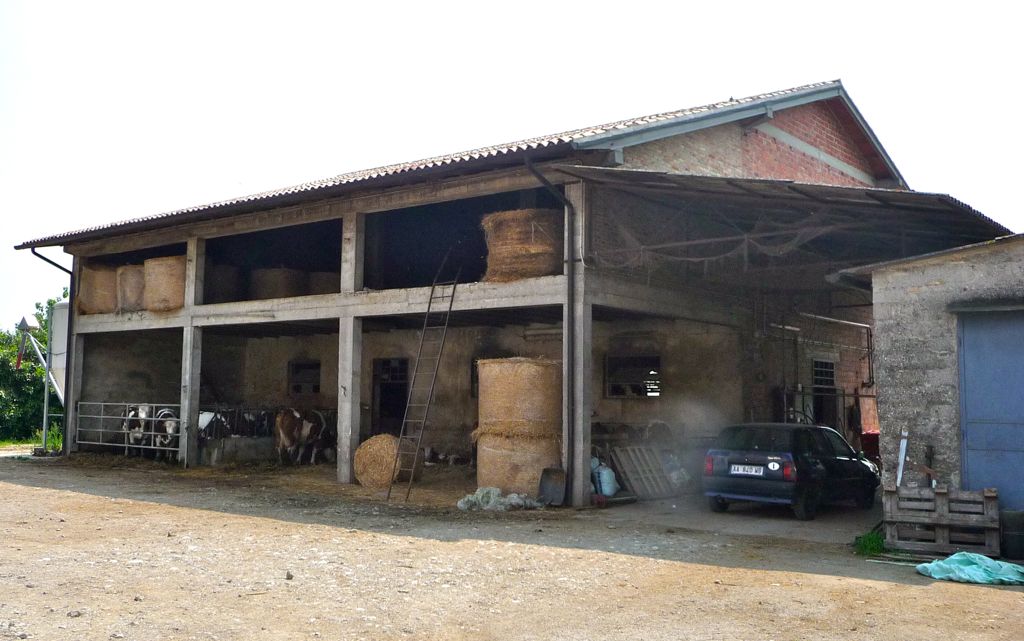
Here we can see the older architecture that the front used to ahve: the columns in a raised relief from the rest of the house.
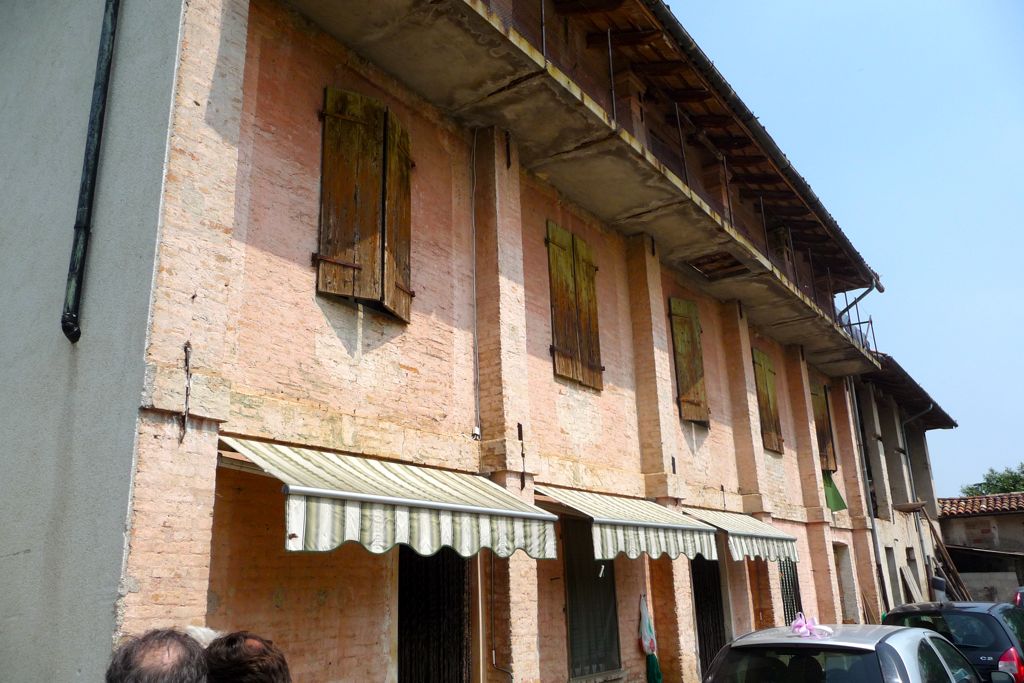
The man on the left is Mr. Mestroni, the current owner of the house. On the right is our friend Paulo who left his friends to enjoy this search.
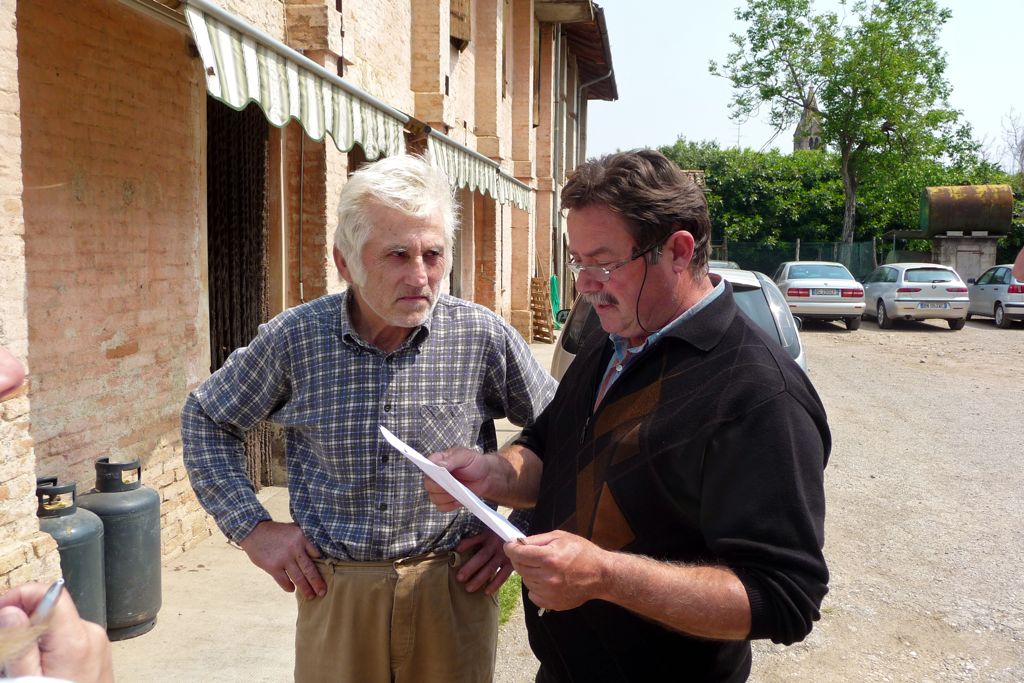
The Mestroni family began to come out of the house to see the commotion we had caused. Daniel Mestroni, in purple, is a graphic artist that uses both PCs and Macs. He has a Gmail account, and he spoke reasonably good English. We talked through him a lot. His brother-in-law is a truck driver.
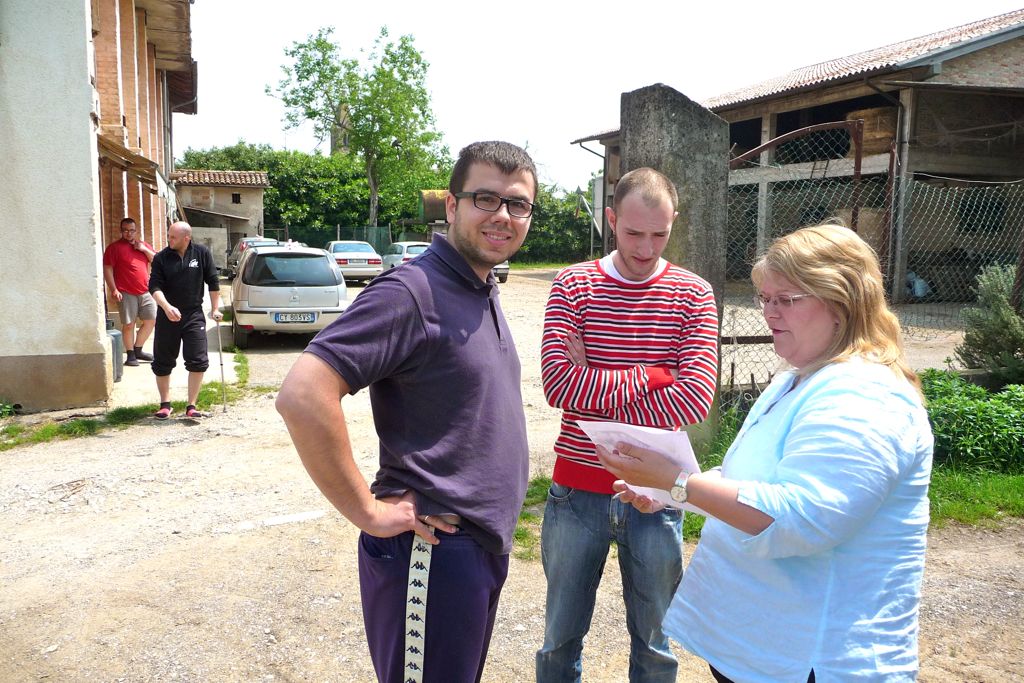
Here the two Mestroni brothers talk to Paulo and the architect.
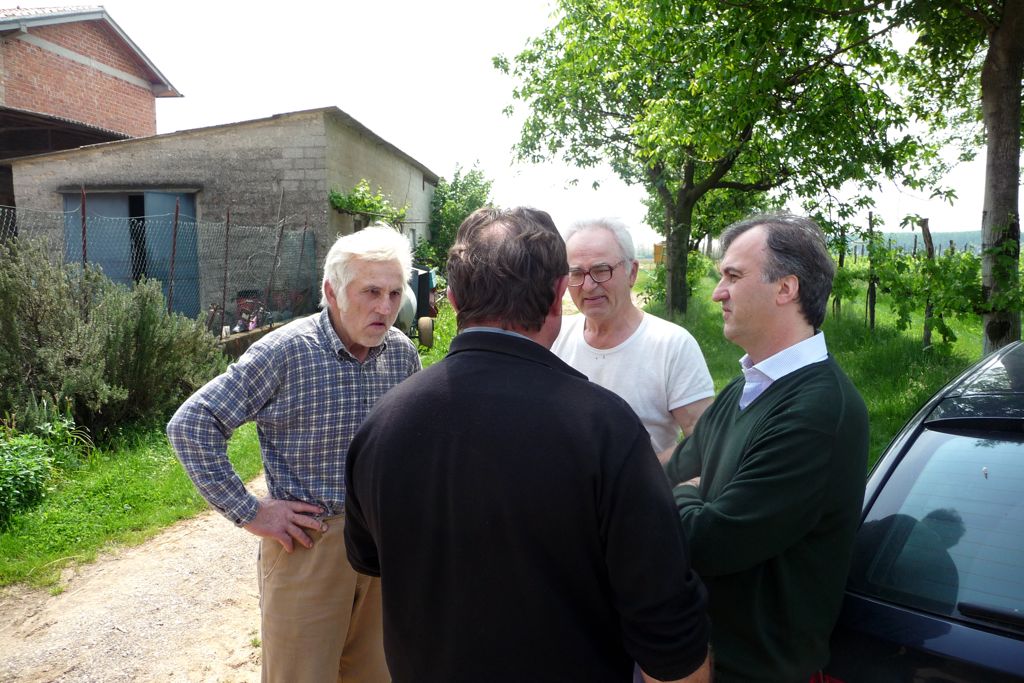
The Mestronis had four boys and a girl. This girl had just had this new baby three weeks ago. What a fun time we had. Then somebody said something and everyone began to laugh. We asked Daniel what they were laughing about and he said that they thought it would be fun for all of us to take a photo in the same spot 95 years after the old photo.
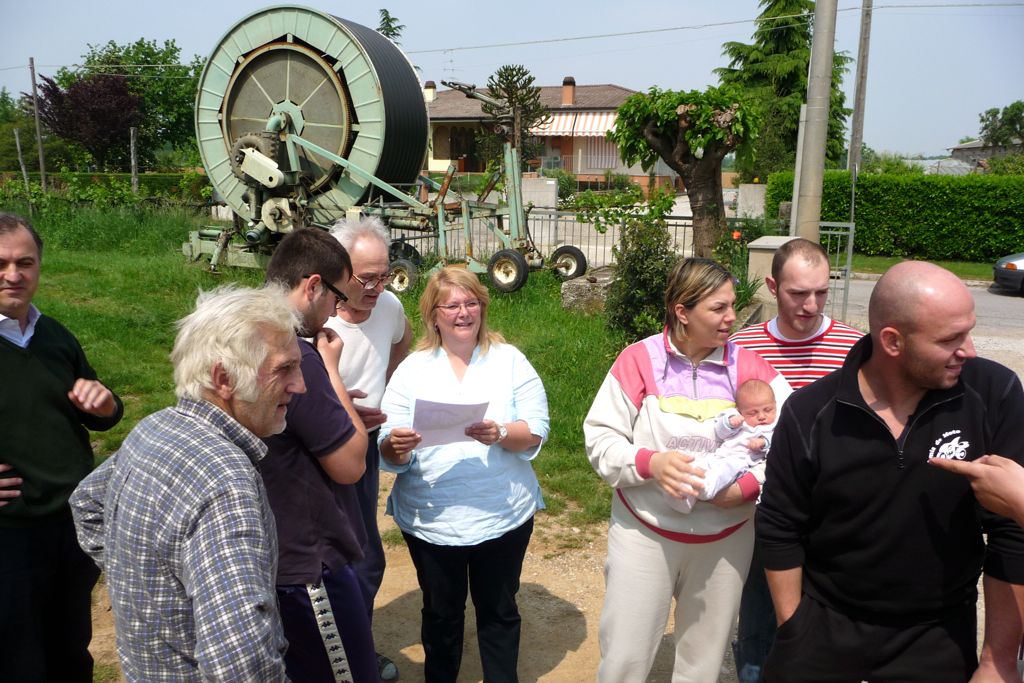
And before you know it, we had gathered everyone for the photo!
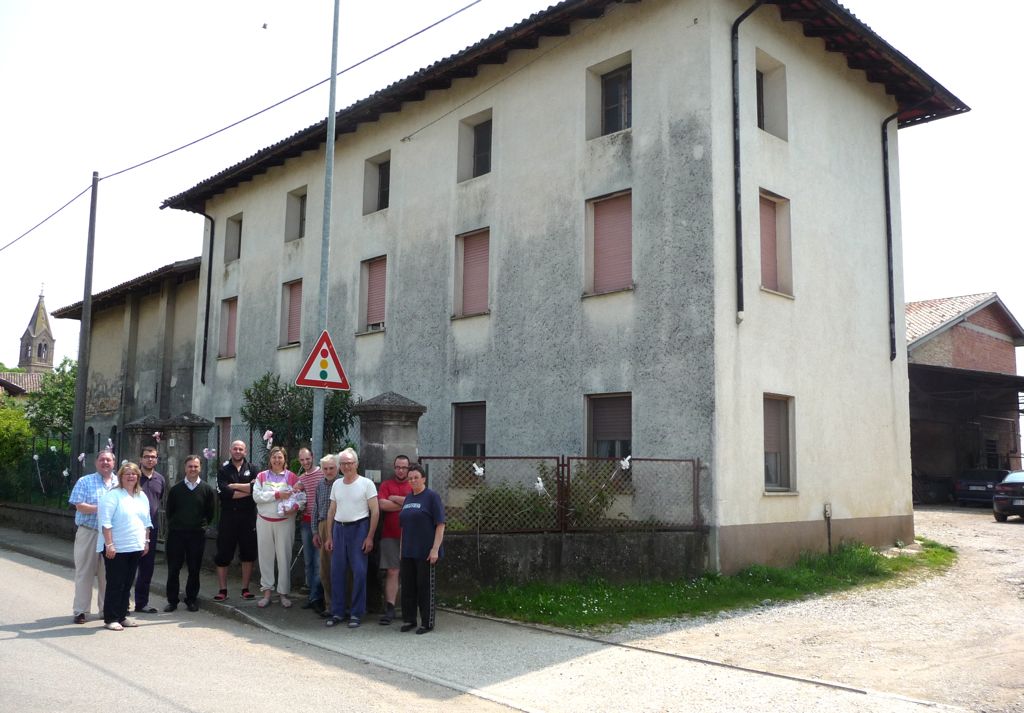
Here is the group, from left to right: Elizabeth Anne Tobin Allen who is a descendant of Luigi Gabbai who used to live in this house; Daniel Mestroni, graphics artist; Paulo, our spontaneous tour guide; the architect; another Mestroni son; the Mestroni daughter with new baby; her husband the truck driver; Mr. Mestroni, the home owner; his brother; another son, and Mrs. Mestroni who came out just long enough to be in the photo and then she vanished.
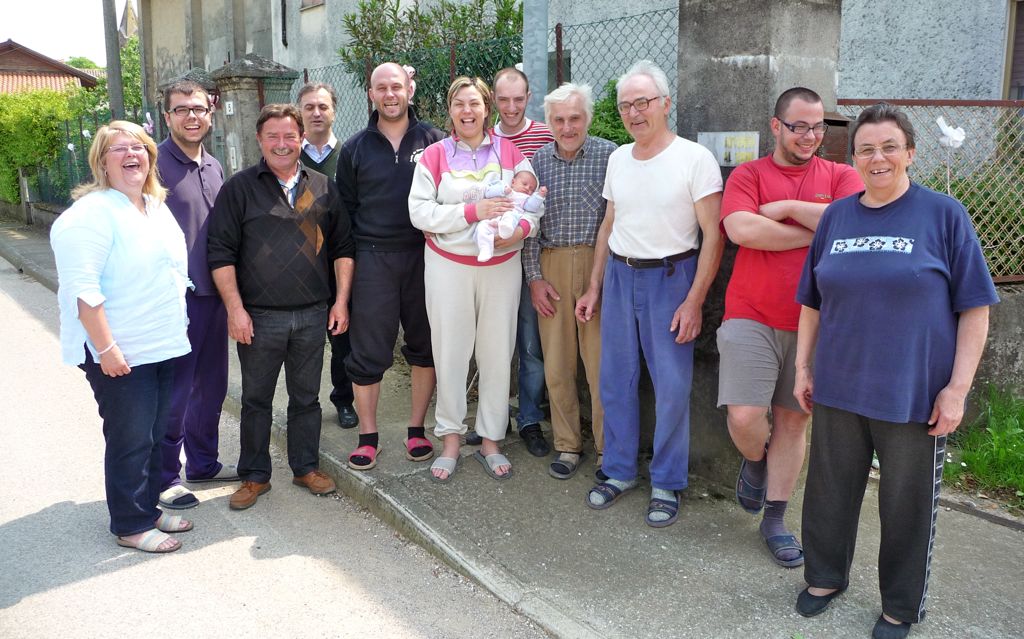
Here is a sign for the city limits of Santo Stefano Udinese with the Giabbai/Mestroni house in the background. Notice that Santo Stefano Udinese is a suburb of Santa Maria la Longa, and notice too the second language, "Sant Scjefin". I believe it is Slovenian. As the crow flies, Slovenia is only ten miles from this house! This party of Italy was also part of Austria-Hungary in the second half of the 1800s.
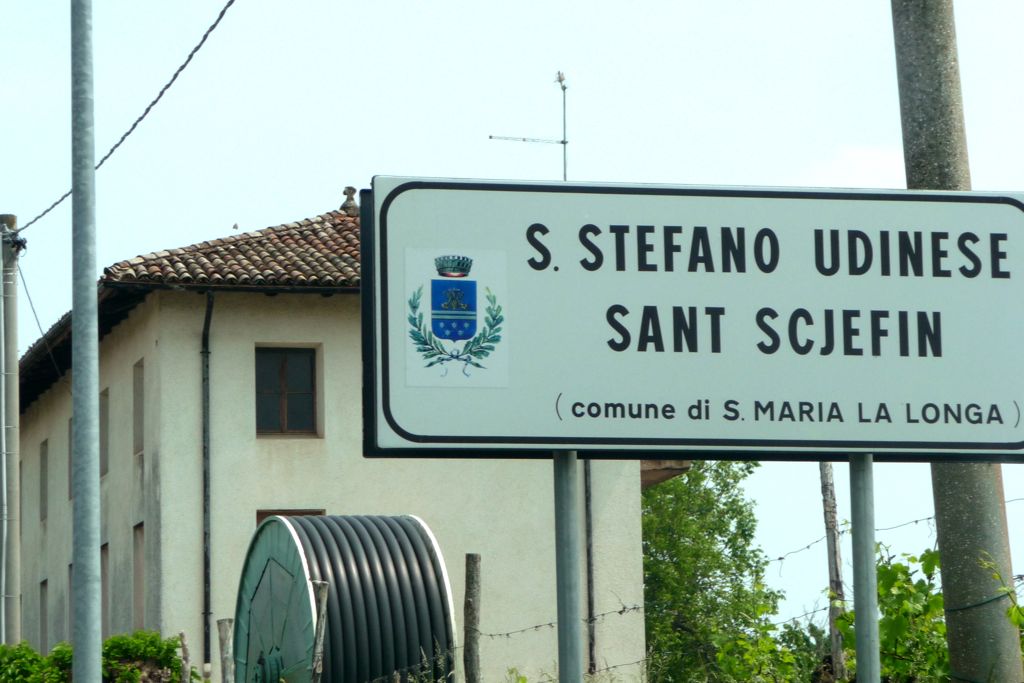
This is the Catholic church in Trivignano where Beth's ancesters Luigi Giabbai and Teresa Canciani were married in 1901. Notice the vertical sundial. Neat!
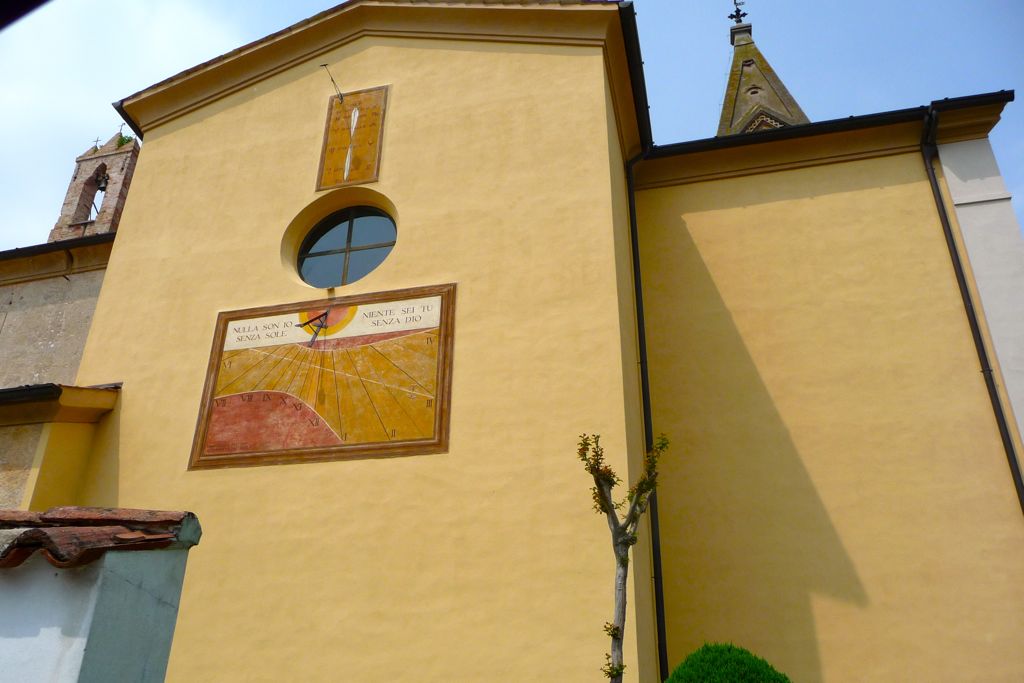
Returning to Grado we would go through the town of Palmanova, which is the town that Luigi Giabbai said he was from on his Ellis Island records. Palmanova has a star fort and was a creation of the Republic of Venice in 1593. There are six roads that go into the town and there are six gates like this to drive through.
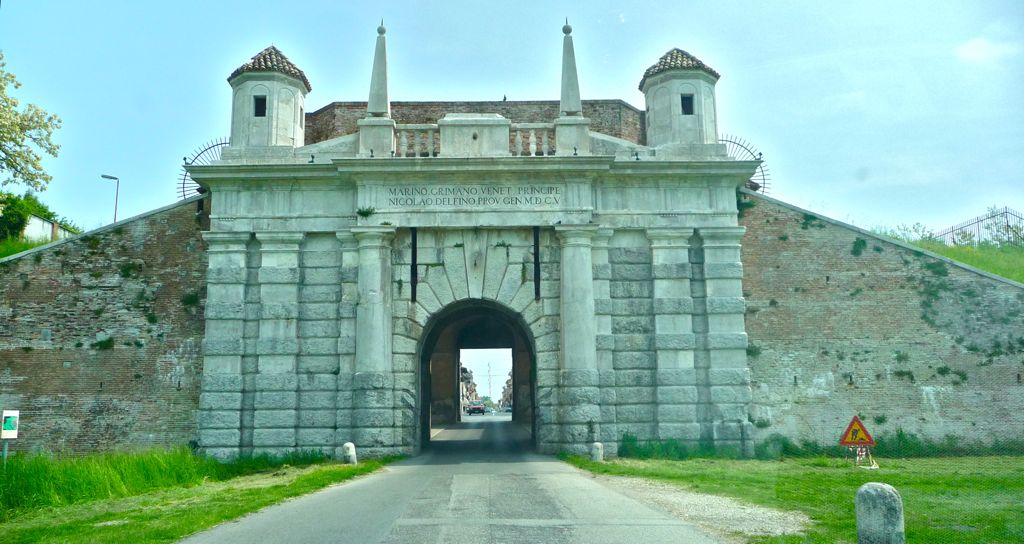
This is the central plaza of Palmanova. We did get to eat with the locals though. We stopped at the cafe we did because we saw people eating great salads. When we went to order the same, they said they were all out of them. Eighteen Euros later and we had a few slices of cheese, a few pieces of bread (no butter: "no burro"), and we were still hungry!
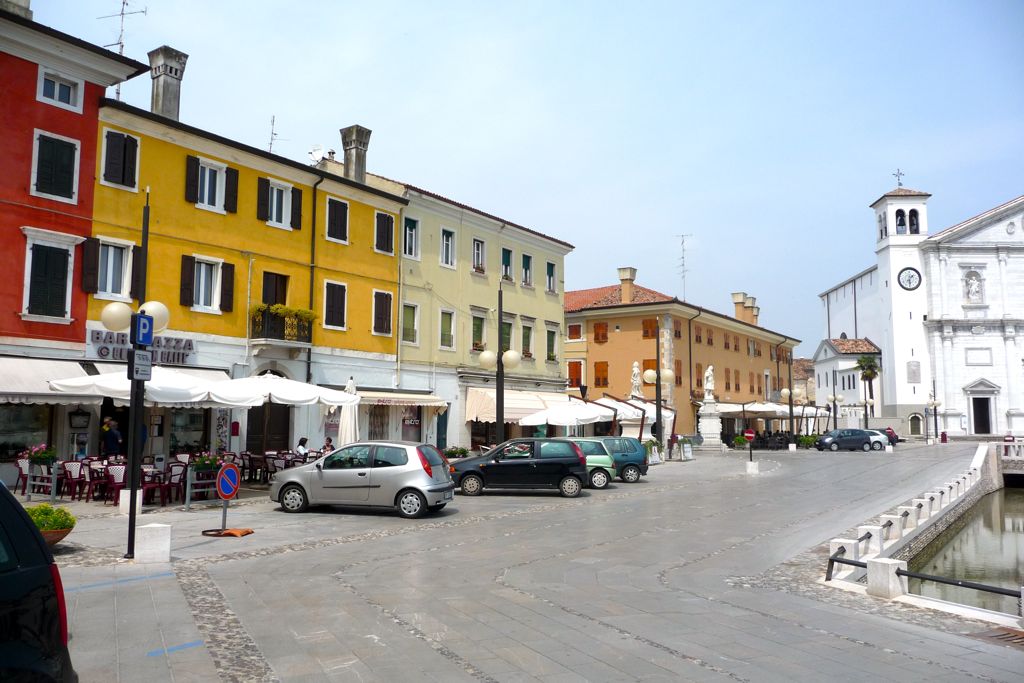
Our next stop was the Municipal Office at San Vito al Torre, also with a vertical sundial. They, like many city offices, are rarely open, and here we discovered that we would need to come back the next day.

Later in the evening we went out for Gelado. Our hotel is in the center back.
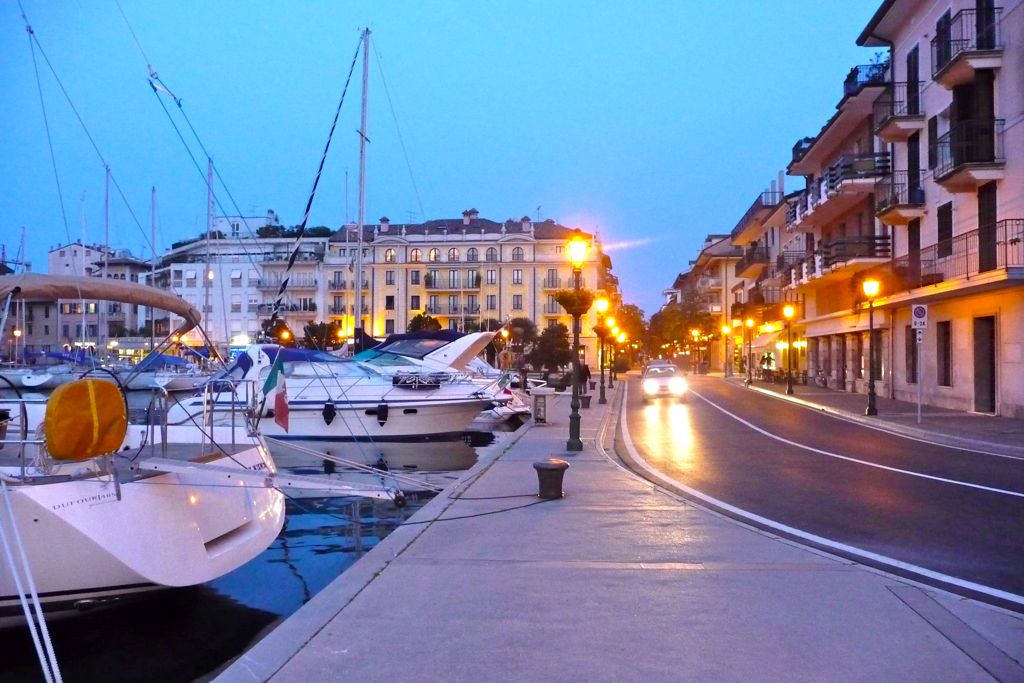
We returned to San Vito al Torre and met this nice man, the chief of police. He helped us but the priest who could help was still asleep. We were to return in another few hours.
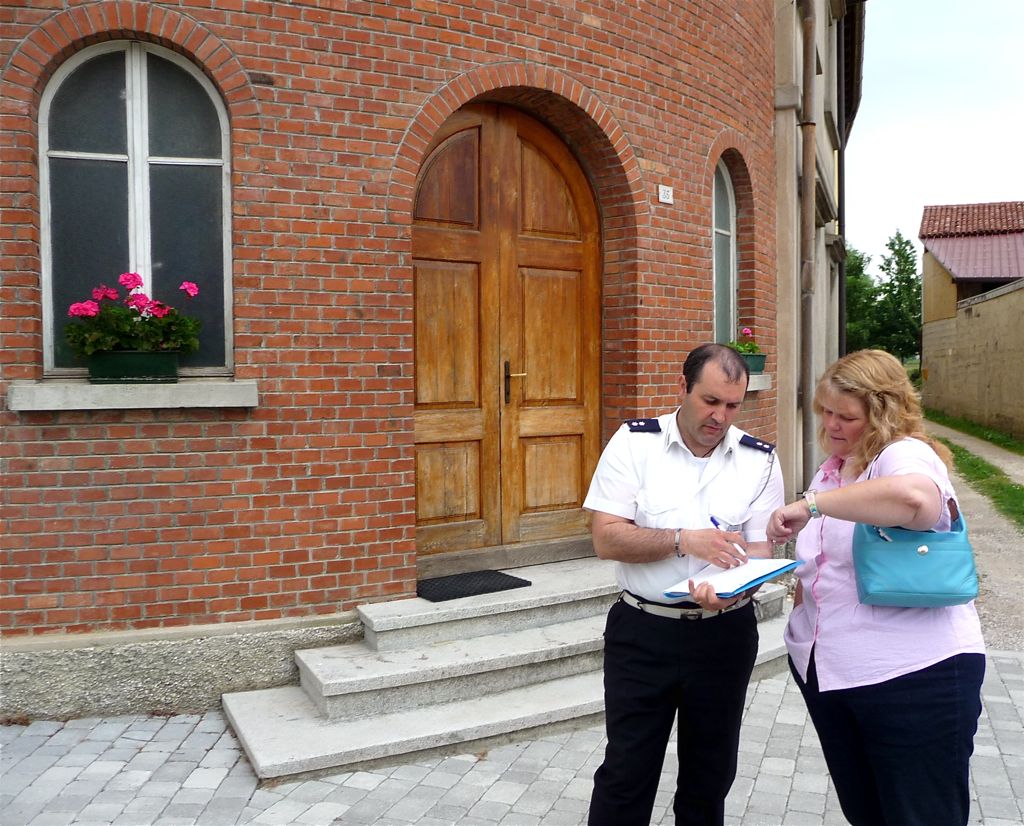
So we drove off to Ialmicco where Teresa Canciani was from. We stopped at a cemetery in Persereano, a town where Valentino Giabbai was from.

We then went to find Daniel Giabbai in San Giovanni al Natisone. Fran Gibbons, a cousin of Beth's, had given us his name. He is a cousin of Beth's. Here he is writing his family tree for us. His English was decent because he had lived in Louisiana for a time. He is an electrician. He gave Beth a hug goodbye. "Familia!"
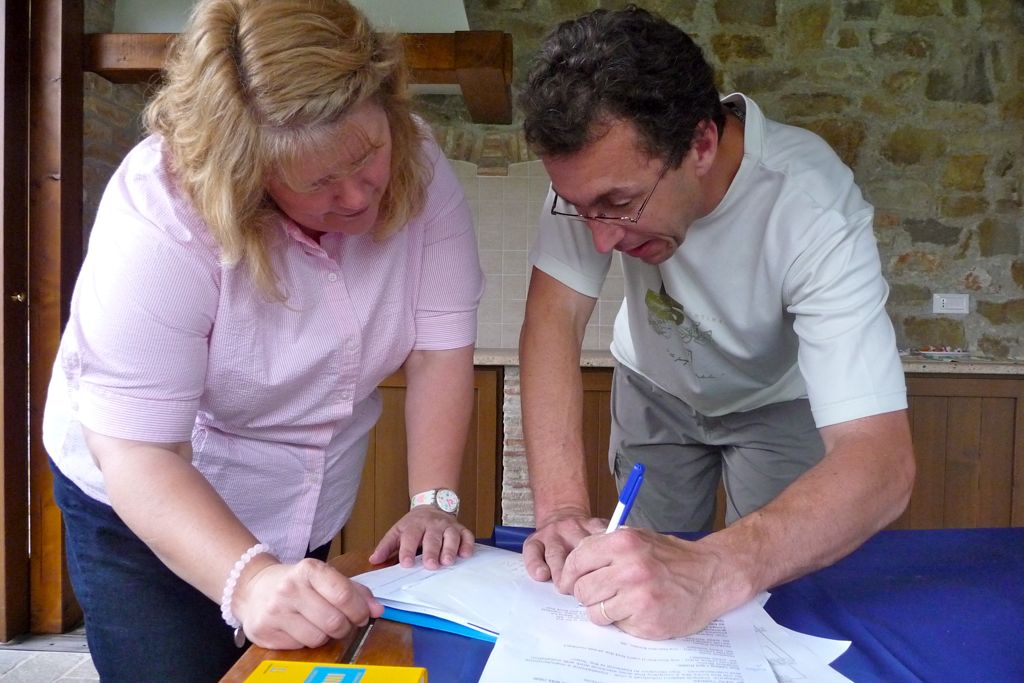
So on our fourth visit to San Vito al Torre, we finally were able to find Remigia Giabbai, one of Beth's main quests. Here is the book with her death information written in Latin.
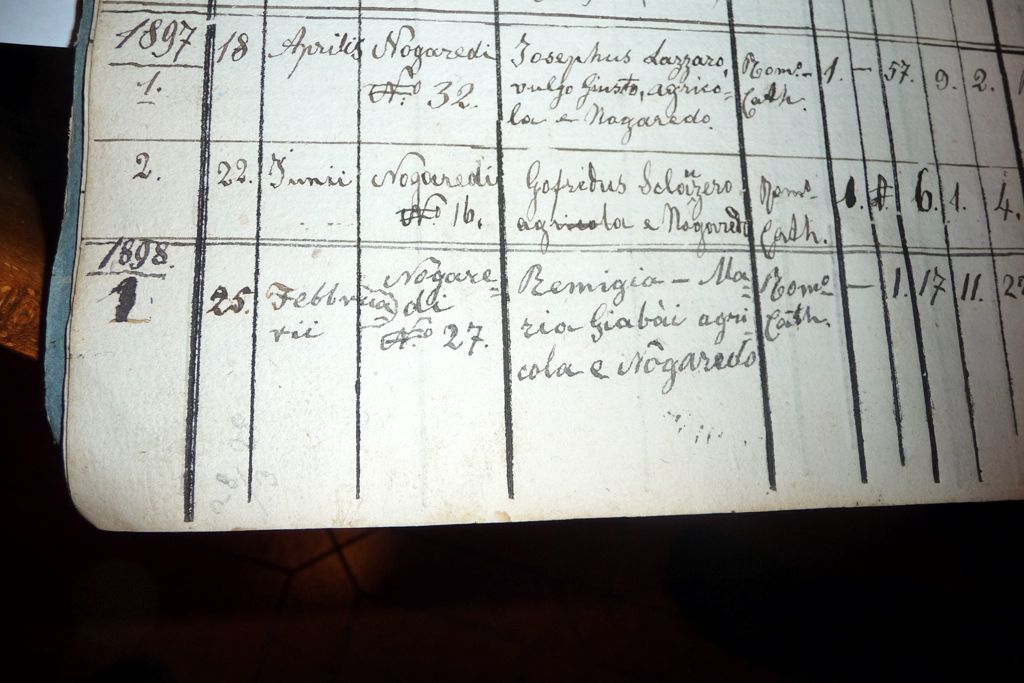
So here we have the mayor of the town writing in Italian (left in blue), and the 90 year old priest Don Elio (in black) reading and translating the Latin.
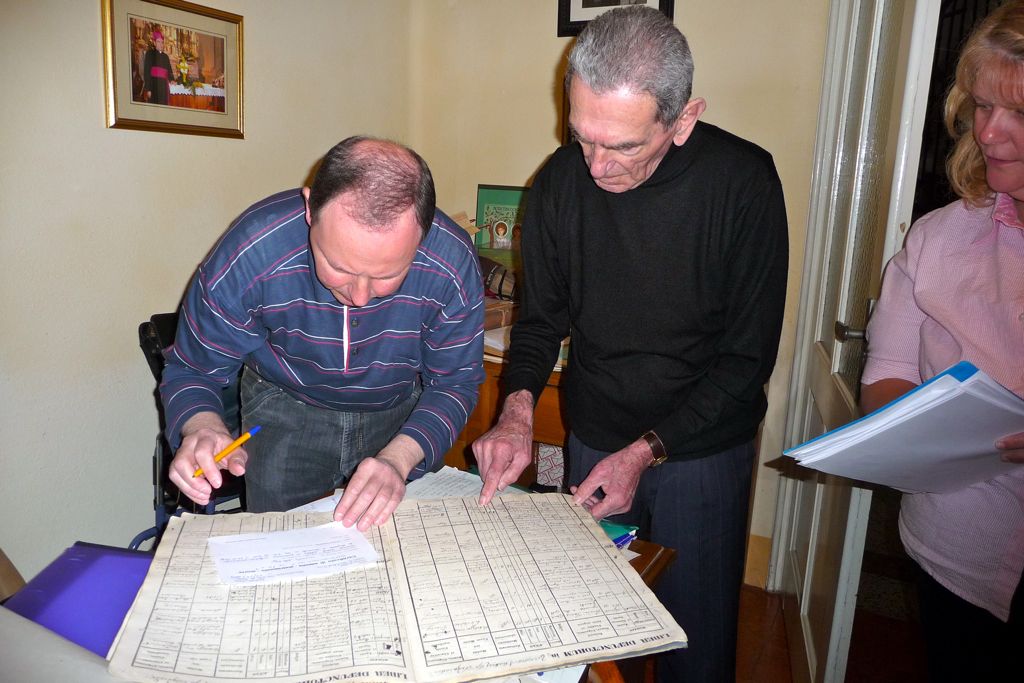
This is the building in San Vito al Torre where the priest lived and where the records were. The mayor then took us across the street to have the new certificate dated, stamped, and made official. They charged us nothing.

The official certificate we got at San Vito al Torre on May 9th.
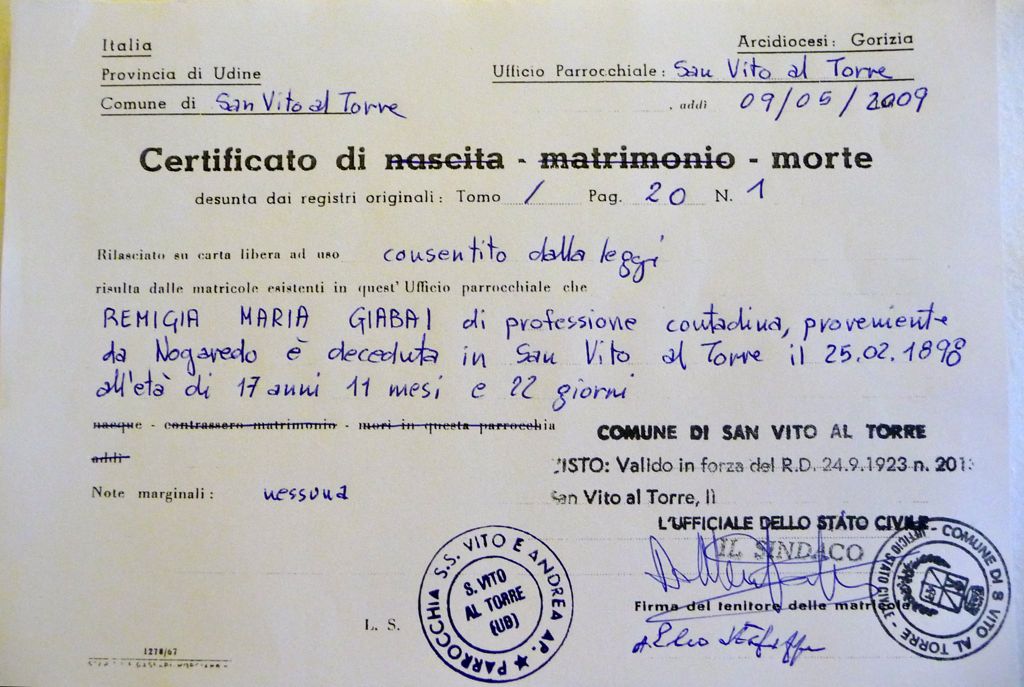
On the outskirts of Palmanova is a new mall, the Palmanova Outlet Village. We wandered around and found some good stir-fry for lunch and of course followed it up with gelato.
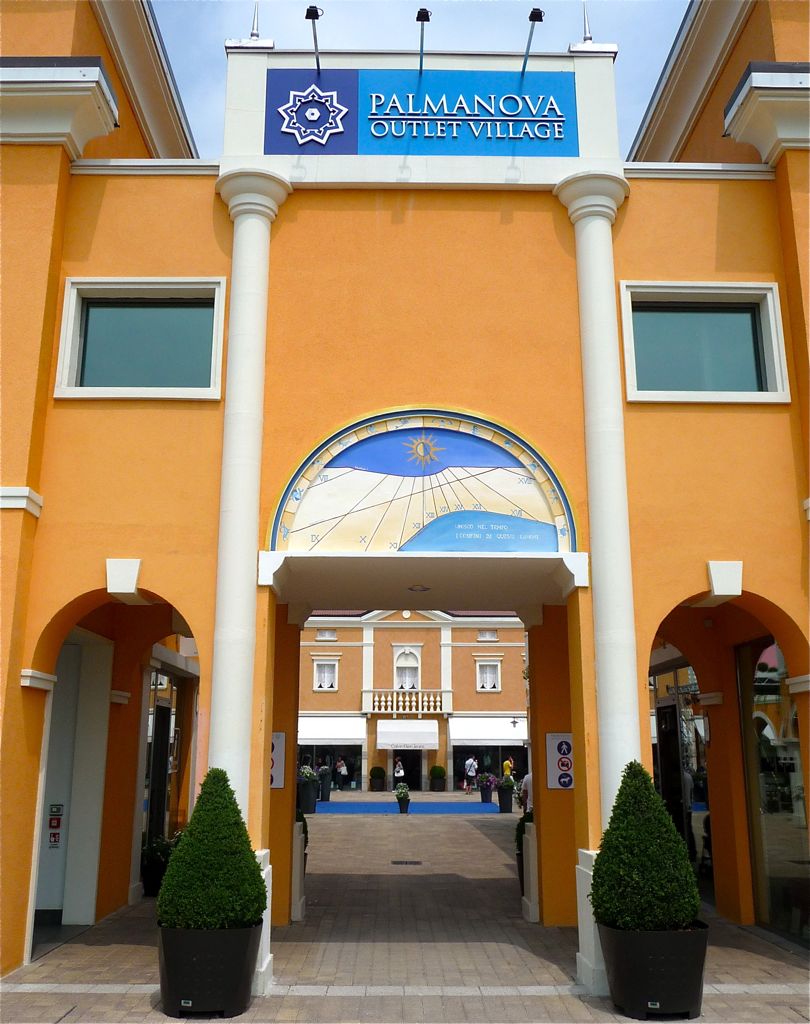
Returning to Grado once again we stopped for groceries in Aquileia, a Roman town that the apostle Mark once went to! Here, in the parking lot, we saw a new Fiat 500 and bought Diet Pepsi.
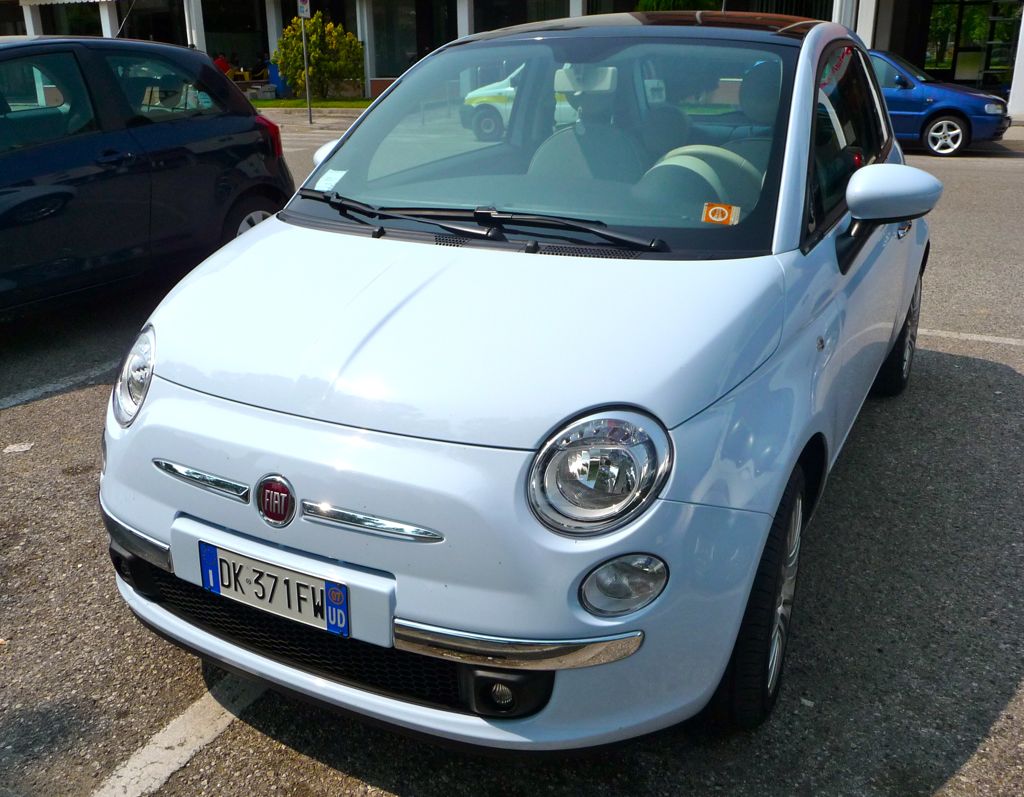
A Grado balcony.
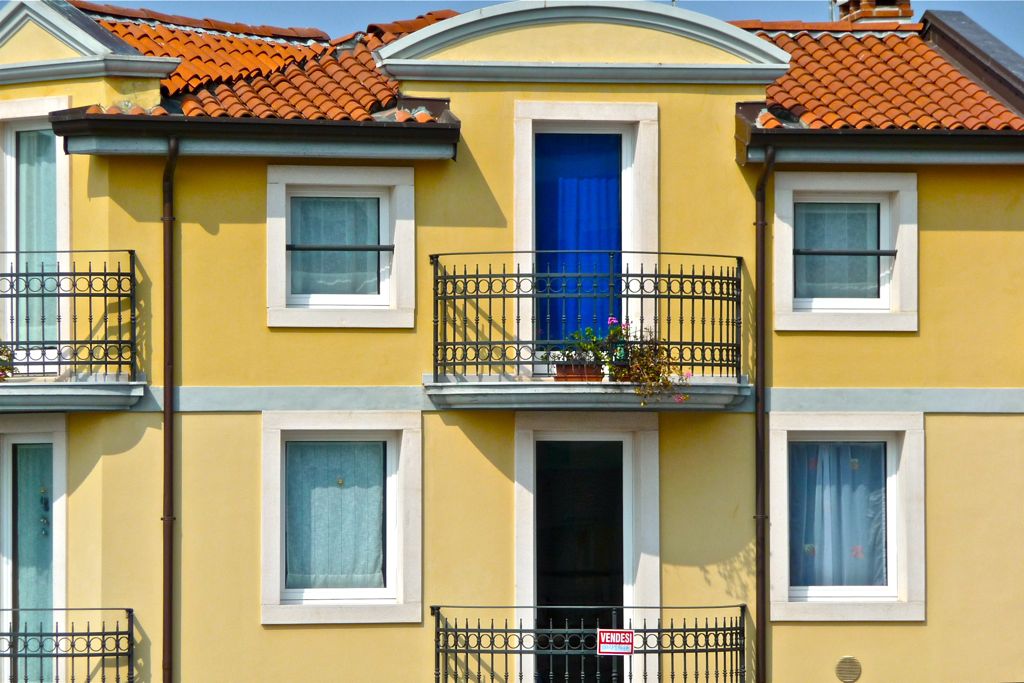
The Grado marina, traffic and fountain from our balcony at night.
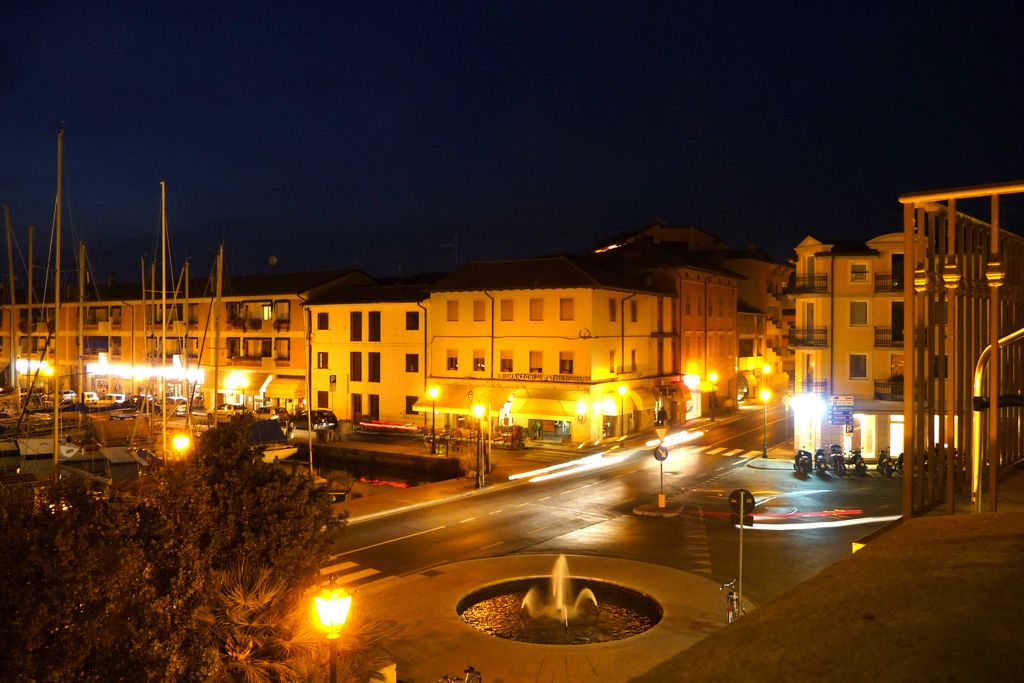
People love to ride bikes in Grado – it's flat!
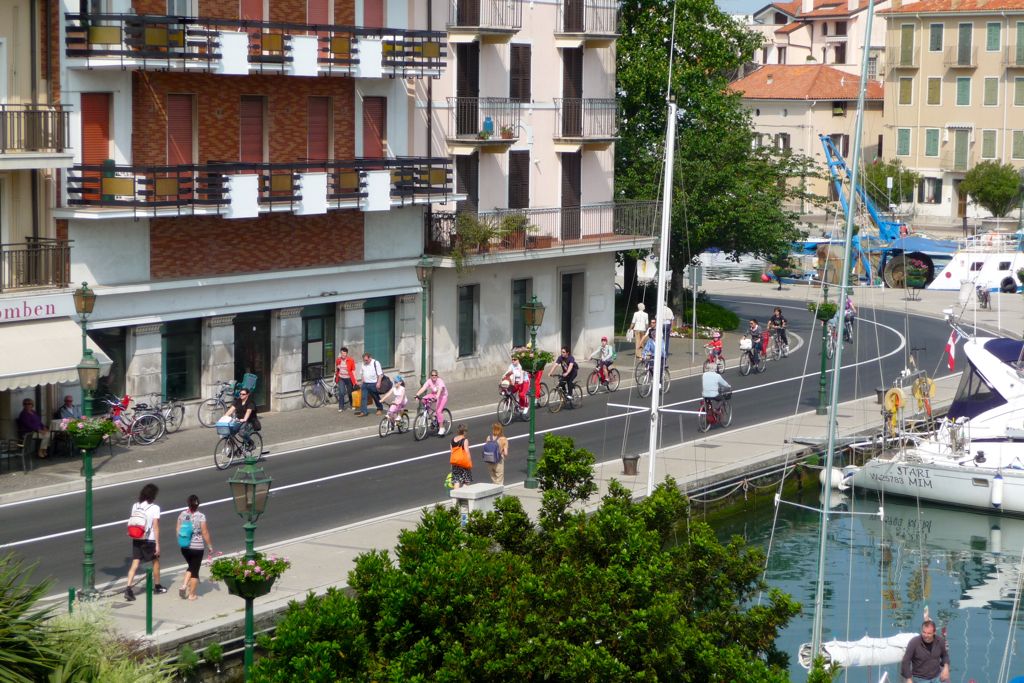
Wow, a yellow Audi A6. Italians in Grado loved Audis.
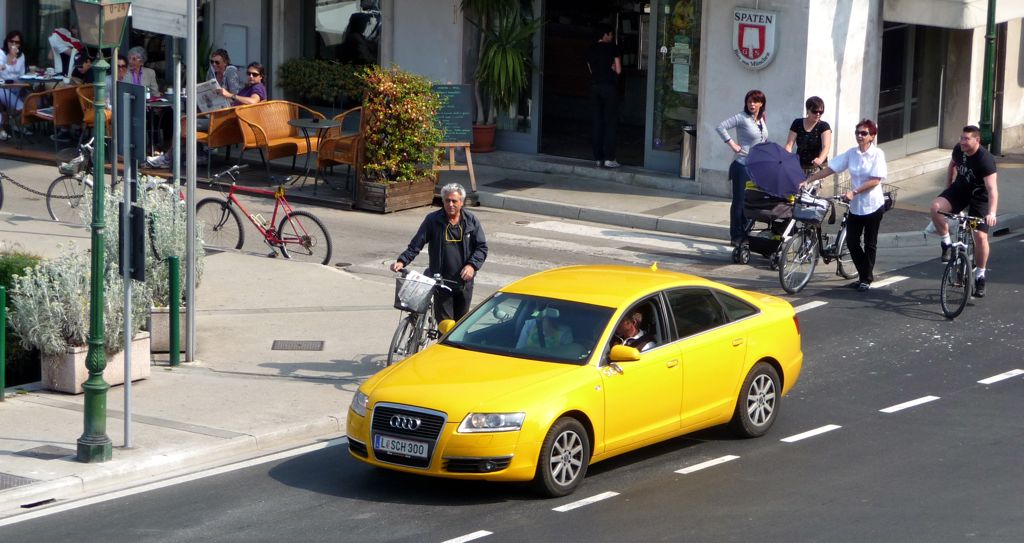
Near the beach we saw some sort of Podarcis wall lizard, about 5-6 inches long without tail.
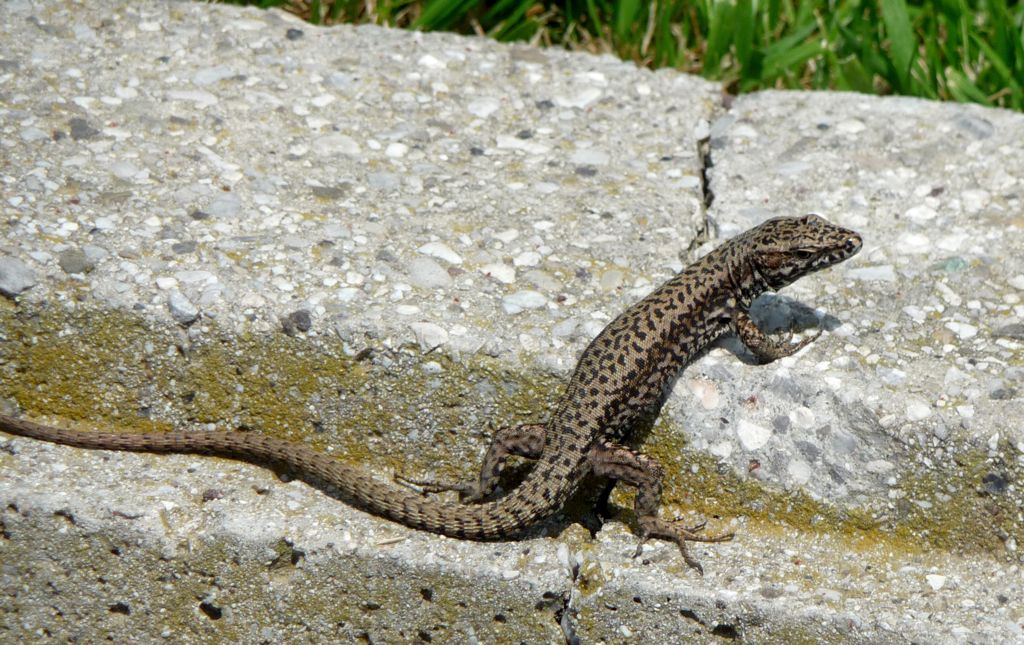
Chocolate gelado, with a cracker and a spoon. Yum!
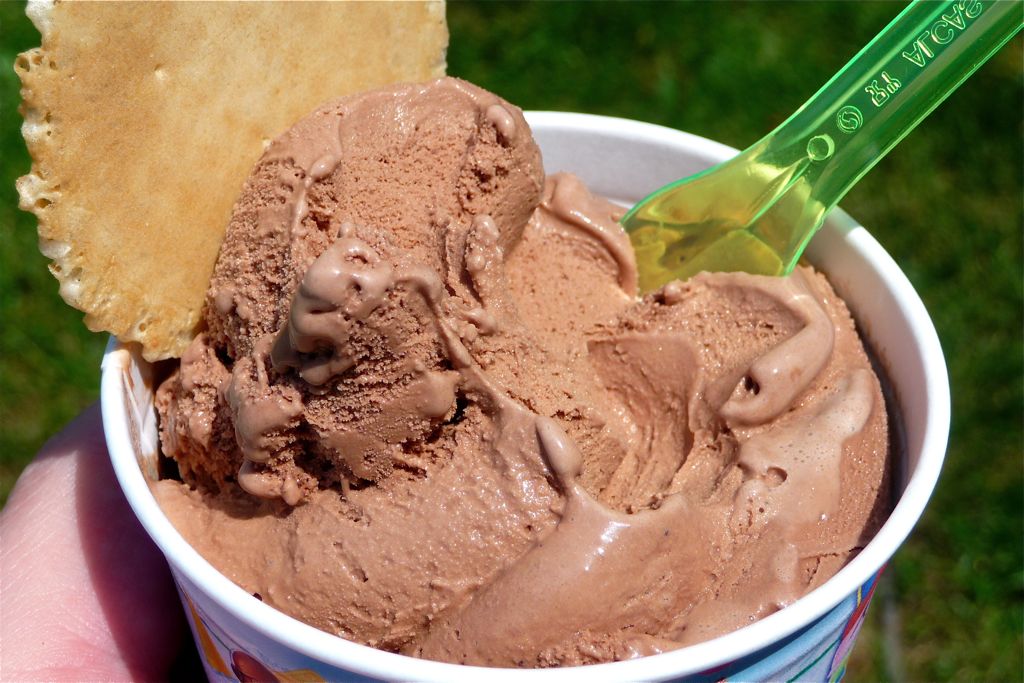
Grado had various ship canals, like Venice. We were the only Americans around. One person asked if we were from England, but Grado mainly has German tourists, and there are no English menus, just German menus, as well as Italian.

An artistic vertical sundial. Note the lat/lon.
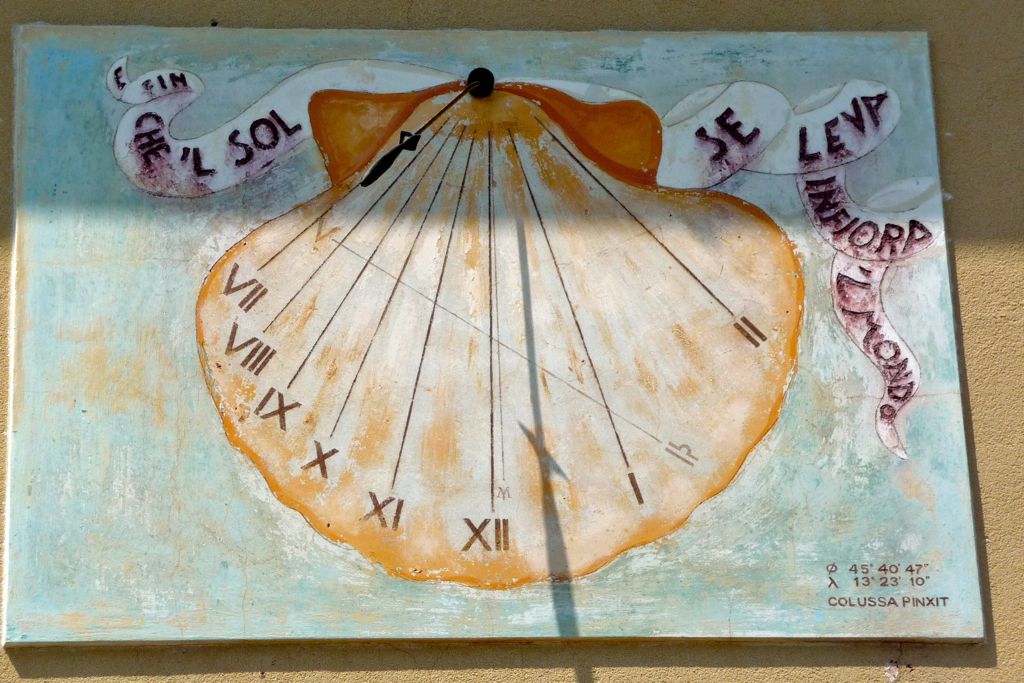
A store window.
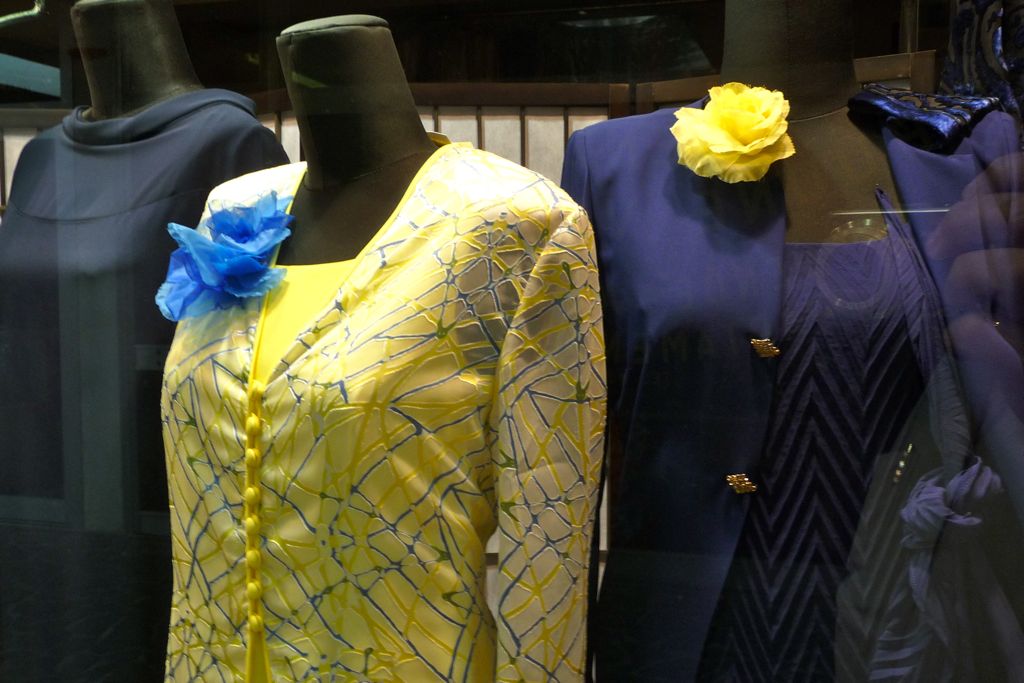
We watched this couple prepare to leave, leave, and then return hours later.
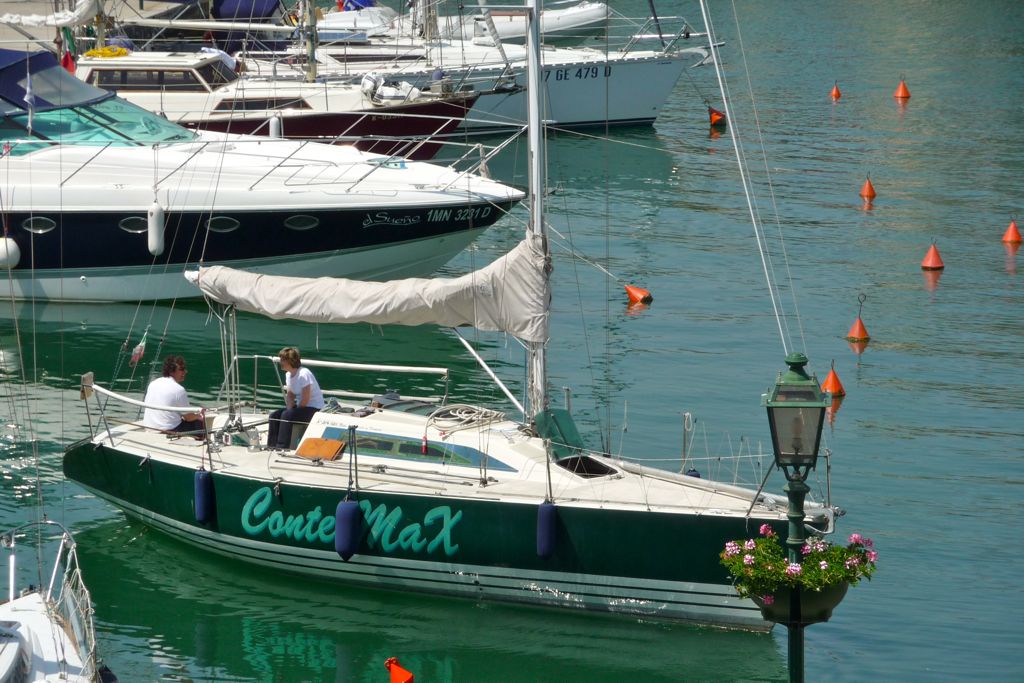
Our last morning in Grado.
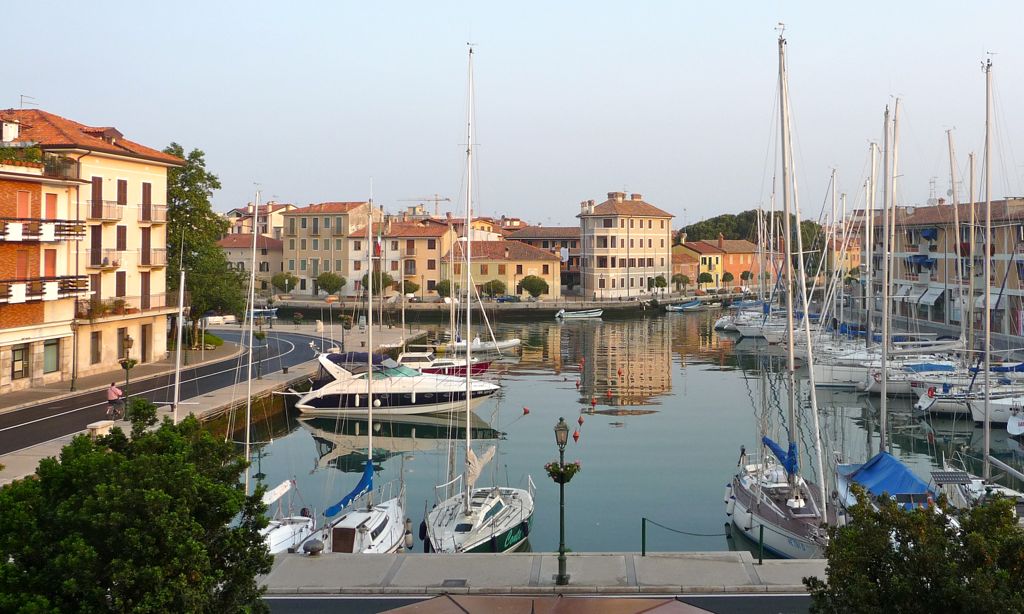
The Roman ruins of Aquilea.

Created: 27 May 2009 Modified: 18 May 2010